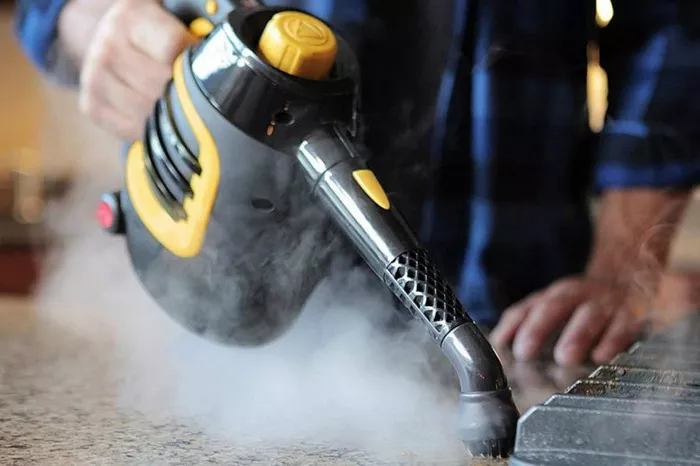Steam cleaners have become increasingly popular for their ability to effectively clean a variety of surfaces without the need for harsh chemicals. Whether it’s for deep cleaning floors, refreshing upholstery, or sanitizing kitchen surfaces, steam cleaners offer a versatile and environmentally friendly solution. But how exactly do they work? In this comprehensive guide, we’ll delve into the inner workings of steam cleaners, exploring their mechanisms, benefits, and best practices for optimal use.
Understanding Steam Cleaners
What is a Steam Cleaner?
A steam cleaner is a device that utilizes the power of steam to clean and sanitize surfaces. It consists of a water tank, a heating element, and a nozzle or brush attachment. When water is heated to a high temperature, it produces steam, which is then emitted through the nozzle or brush to clean surfaces effectively.
How Does it Produce Steam?
Steam cleaners feature a heating element, typically located near the water tank. This heating element heats the water to temperatures ranging from 200 to 300 degrees Fahrenheit (93 to 149 degrees Celsius), turning it into steam. The steam is then pressurized and released through the nozzle or brush attachment, allowing for efficient cleaning.
Types of Steam Cleaners
There are various types of steam cleaners available, including handheld steam cleaners, steam mops, and canister steam cleaners. Handheld steam cleaners are compact and portable, ideal for spot cleaning and hard-to-reach areas. Steam mops resemble traditional mops but use steam for deeper cleaning of floors. Canister steam cleaners feature a separate water tank and steam-generating unit, offering versatility and power for larger cleaning tasks.
The Science Behind Steam Cleaning
How Does Steam Clean?
Steam effectively cleans surfaces by loosening dirt, grime, and grease, making it easier to wipe away. The high temperature of the steam also helps to kill bacteria, viruses, and other pathogens, providing a hygienic cleaning solution. Additionally, steam penetrates porous surfaces, such as grout and upholstery, reaching deep into crevices for thorough cleaning.
Benefits of Steam Cleaning
1. Environmentally Friendly: Steam cleaners use water as the primary cleaning agent, eliminating the need for chemical cleaners that can harm the environment.
2. Versatility: Steam cleaners can be used on a wide range of surfaces, including sealed hardwood floors, tile, carpet, upholstery, and countertops.
3. Allergen Reduction: The high temperature of steam kills dust mites, mold spores, and other allergens, making it ideal for allergy sufferers.
4. Time and Cost Savings: With steam cleaning, there’s no need to purchase multiple cleaning products, saving both time and money in the long run.
Tips for Using a Steam Cleaner Effectively
Preparing Surfaces
Before using a steam cleaner, it’s essential to prepare the surfaces to be cleaned. Remove any loose debris or clutter, and vacuum or sweep the area to remove surface dirt and dust. Pre-treating stubborn stains with a suitable cleaning solution can also help improve results.
Choosing the Right Attachment
Different surfaces may require specific attachments for optimal cleaning. For example, a nylon brush attachment may be suitable for scrubbing tile grout, while a microfiber pad attachment is ideal for cleaning hardwood floors. Always refer to the manufacturer’s instructions for guidance on attachment selection.
Proper Technique
When using a steam cleaner, it’s essential to maintain steady, even movements to ensure thorough cleaning. Avoid lingering in one spot for too long, as this can oversaturate surfaces and potentially damage delicate materials. For heavily soiled areas, multiple passes may be necessary.
Post-Cleaning Maintenance
After using a steam cleaner, allow surfaces to dry completely before resuming normal use. Empty and rinse the water tank, and clean the nozzle or brush attachment to prevent the buildup of mineral deposits or debris. Store the steam cleaner in a cool, dry place to prolong its lifespan.
Conclusion
Steam cleaners offer a convenient, eco-friendly solution for keeping your home clean and sanitized. By harnessing the power of steam, these devices effectively remove dirt, grime, and bacteria from a variety of surfaces, without the need for harsh chemicals. Understanding how steam cleaners work and following best practices for their use can help you achieve optimal results and maintain a healthy living environment for you and your family.
FAQs
Q1. Can I Use Tap Water in My Steam Cleaner?
Yes, you can typically use tap water in most steam cleaners. However, if you live in an area with hard water, mineral deposits may build up over time, affecting the performance of the steam cleaner. Using distilled water can help prevent this issue and prolong the lifespan of your device.
Q2. Are Steam Cleaners Safe for All Surfaces?
While steam cleaners are generally safe for a wide range of surfaces, it’s essential to check the manufacturer’s guidelines and test a small, inconspicuous area before cleaning. Some delicate materials, such as unsealed hardwood floors or certain types of upholstery, may be sensitive to high heat and moisture.
Q3. How Often Should I Use My Steam Cleaner?
The frequency of steam cleaning will depend on factors such as household traffic, the presence of pets or allergies, and personal preferences. As a general guideline, using a steam cleaner once a week for routine maintenance can help keep surfaces clean and sanitized. However, adjust the frequency as needed based on specific cleaning needs and preferences.

